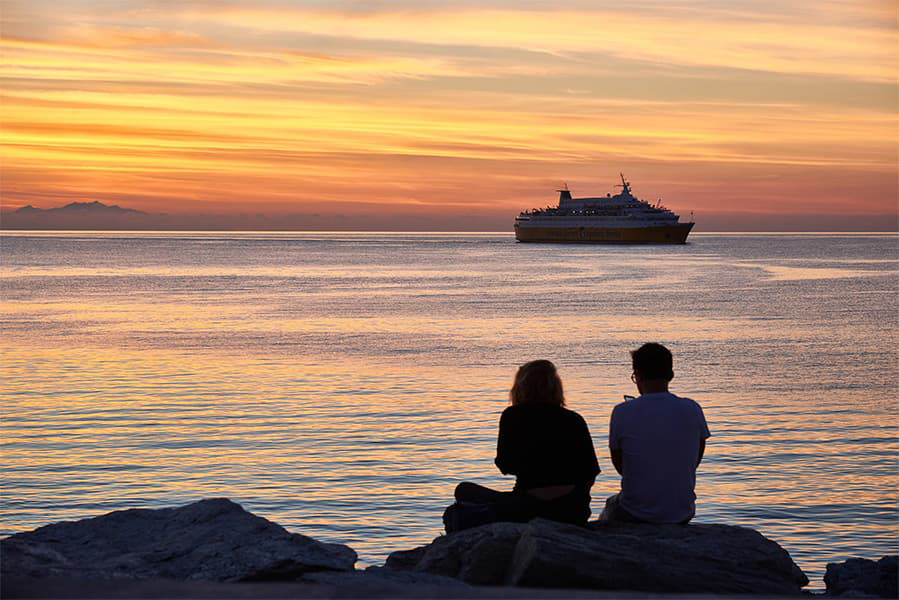Stromness – Scrabster
Ferries to Scotland
Stromness – Scrabster
Ferries to Scotland

Depending on the season their are usually 2 daily and 12 weekly sailings between Stromness and Scrabster. Northlink Ferries provides the ferry from Stromness to Scrabster. Stromness Scrabster ferries cost between $52 and $537, depending on ticket details. Prices exclude any service fees. Ferry timetables change seasonally, use our Deal Finder to get tickets, pricing, schedules and availability.
The earliest Stromness Scrabster ferry typically departs Stromness at about 06:30 and the last ferry usually leaves at 16:45.
Ferries from Stromness to Scrabster sail in around 1 hour 30 minutes. Ferry duration can vary by ferry provider and can be impacted by weather conditions.
There is 12 weekly sailings from Stromness to Scrabster provided by Northlink Ferries. Timetables can change from season to season.
The price of a ferry from Stromness to Scrabster typically range between $52* and $537*. On average the Stromness Scrabster ferry is $251*. The cheapest Stromness Scrabster ferry prices start from $52*. The average price for a foot passenger is $94*. The average price for a car is $384*.
Pricing will vary depending on number of passengers, vehicle type, route and sailing times. Pricing is taken from searches over last 30 days and exclusive of service fees, last updated November 25.
The distance between Stromness to Scrabster is approximately 30 miles (48km) or 26 nautical miles.
Yes, Stromness Scrabster ferries allow cars onboard with Northlink Ferries between Stromness and Scrabster. To view car ferry tickets and prices between Stromness and Scrabster use our Deal Finder.
Northlink Ferries allow foot passengers on Stromness Scrabster ferries.
Northlink Ferries allow pets on ferries from Stromness to Scrabster. Please also note that your pet may have to stay in the vehicle during the journey.
More routes than anyone else.

Compare fares, times & routes in one place.
Change plans easily with flexi tickets.

Book e-tickets & manage trips in-app.
Live ship tracking & real-time updates.

Top-rated customer support when you need it.
| Stromness - Scrabster Ferry Route Summary | ||
|---|---|---|
| Departure Country | Orkney Islands | |
| Destination Country | Scotland | |
| No. of Operators | 1 | |
| Operators | Northlink Ferries | |
| Average Price | $251 | |
| Average Daily Sailings | 2 | |
| Average Weekly Sailings | 12 | |
| Average Sailing Duration | 1 h 30 m | |
| Fastest Sailing Duration | 1 h 30 m | |
| First Ferry | 06:30 | |
| Last Ferry | 16:45 | |
| Distance | 26 Nautical Miles | |
* Prices subject to change, pricing is taken from last 30 days, last updated 1 November 2025.
Stromness is a town in Orkney, Scotland, and is located in the south west of the island. The town is home to a well established port and at its heart is the main street which is lined with shops and houses. The town is made up of narrow lanes and alleys which lead off the main street, and is definitely full of charm. Records show that the town can trace its history back to the 16th century where an inn was located at the site of the current town. However, the town grew in importance during the 17th century when England was at war with France.
Located in the north part of the town are the harbour and quays that are now services by a new access road. facilities at the port include a tourist information office, vending machines, lockers and facilities for disabled passengers. A ferry service from Stromness to the Scottish mainland via the port of Scrabster operates as many as three times a day with the journey taking around 1 hour and 30 minutes.
The Scottish town of Scrabster is located around 11 miles from the Castle of Mey and is within walking distance of Thurso, the second largest town in the Highlands. The Scottish Highlands are widely regarded as Europe's last remaining wilderness and is full of flora and fauna and has been a popular destination with the British royal family for decades. Visitors to Caithness and Sutherland have plenty of things to see and do which includes a number of historic buildings and a beautiful coastline. Scrabster is the most northerly port on the Scottish mainland and has been a popular port of choice for the Queen and her family when they disembarked from the Royal Yacht Britannia every August to visit the Queen Mother at her Highland holiday home, Castle of Mey, 11 miles from Scrabster. Today, visitors can follow in their footsteps, as the Castle is open to visitors.
Ferries from the port depart to Stromness in Orkney.